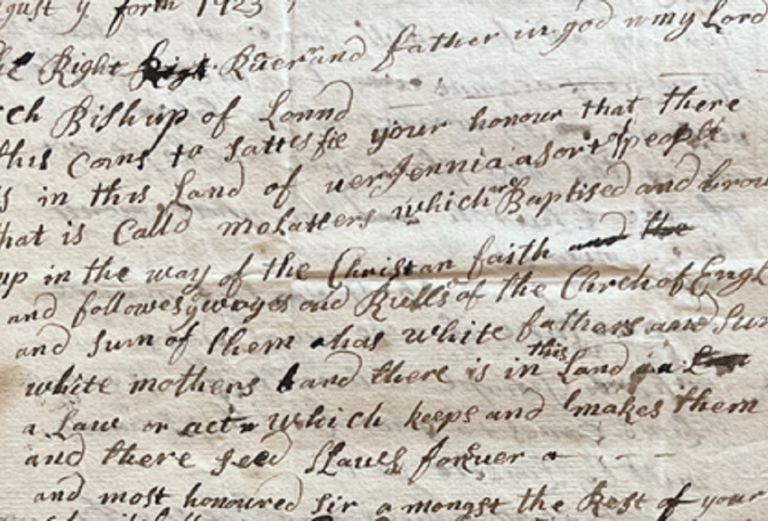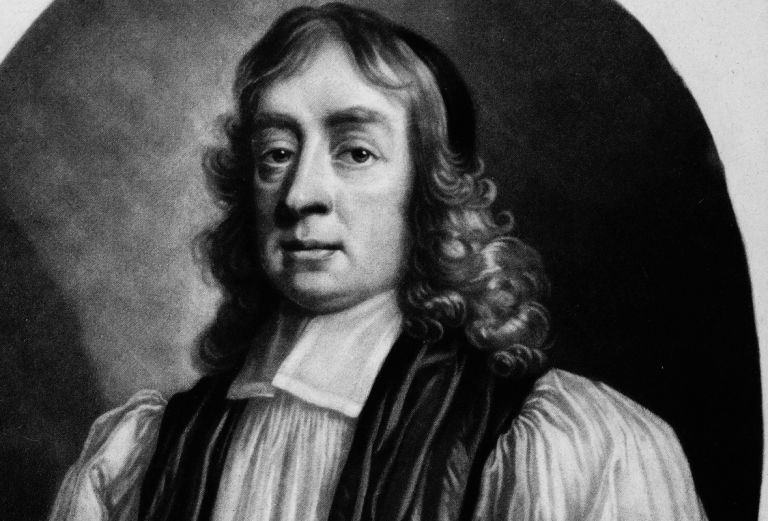
Written by Dr Celia Mill, archive research project manager.
Following my previous blog, I am now able to provide further information on the historical research we have been undertaking at the Palace.
The aims of Fulham Palace’s research into the Bishop of London (BoL), colonialism and the slave trade included: finding out how and why he became ‘Bishop of the colonies’; what he did as part of his role; and the impact he had on the lives of those who lived under his jurisdiction, especially enslaved Africans.
Some of these questions are easier to answer than others, and this article explains some of what we have been able to find out so far.
How, why, and what:
The Bishop of London, along with the Archbishop of Canterbury, was very close to the monarch while also playing a key role in government. In 1637, when large numbers of people were emigrating to New England, William Laud, then Archbishop of Canterbury, persuaded King Charles I to decree that only people who had testimonials from the minister of their church saying that they conformed to its order and discipline should be allowed to leave. The King and Archbishop also ordered that any clergymen wishing to emigrate needed permission from both the Archbishop of Canterbury and the Bishop of London. Worried that too many wanted to deviate from the Anglican faith, they tried to ensure that none went abroad who would “nourish their factions and schismatical humours, to the hindrance and good conformity of the Church”.
In the same year, the Bishop of London William Juxon (BoL 1633-49), was made Lord Treasurer, privy councillor, and member of all committees, as well as the commission for the admiralty and the council of war. As a result, he was fully aware of, and contributed to, the government’s role in transatlantic slavery and the slave trade. Later Bishops followed in his footsteps, with Bishop Gilbert Sheldon becoming a member of the Council for Foreign Plantations and sending clergymen to Jamaica to ordain ministers there on the island.
It was not until Henry Compton became BoL in 1675 that larger, more formal ecclesiastical structures were put in place. For example, he was the first to send commissaries to act as
his representative, reporting back to him on the behaviour of the clergy and with the authority to enforce discipline as required.
By 1723 however, when Edmund Gibson became BoL, it had become unclear where this authority came from and an investigation was carried out. A report probably written about 1725 is given a title redolent of a crime fiction novel: “The Case of the Bishop of London’s Jurisdiction in the Plantation”. It starts by saying his jurisdiction has “been long understood and taken for granted … by an Order of Council in the reign of K. Charles the second” but goes on to say that no such order has been found.
The report concludes that because there has been so much confusion between the commissaries and the Governors over who has the power to do what, Bishop Gibson will not appoint any more commissaries “in any one of the Governments, till his majesty’s pleasure may be known, and till the Extent of this jurisdiction shall be explain’d and ascertain’d”.

Impact – on the enslavers:
In broad terms, the legislators and plantation owners resisted religious authority. The same 1725 report notes that by 1721the BoL’s jurisdiction had “become merely nominal”. Much of the commissary’s duties were transferred to Governors who were particularly keen to keep the authority for appointing clergymen to their benefices, granting marriage licenses, and dealing with the probate of wills, all of which incurred financial contributions.
The planters often did not want their enslaved workforce to be converted to Christianity or to be taught to read. They were also worried that allowing large groups of people from different plantations to meet every week would lead to planned uprisings. There were also concerns that conversion to Christianity through baptism would mean that enslaved people would become free and several laws were passed across the colonies to make sure this was not the case.
Impact – on the enslaved:
Despite the planters’ disapproval of teaching Christianity to enslaved people, some of them did convert and were educated into the Church. In some cases this also contributed to the organisation of physical uprisings but there were also more invisible forms of resistance.
In 1723 a letter was written by a mixed-race enslaved person in Virginia to the “Archbishop of London”, asking that they be released from the cruel bondage of slavery. They note that they find it hard to keep the Sabbath, and use their understanding of scripture to make the point that they “do hardly know when it comes for our task masters are as hard with us as the Egyptions was with the Children of Israel”. It is also striking that they have faith in the Bishop of London and the King to be able to alter their situation when they become aware of such bad treatment:
wee are kept out of the Church and matrimony is denied us: and to be plain they doo Look no more upon us then if wee were dogs which I hope when these Strange Times comes to your Lordships hands will be Looket in to and here wee beg for Jesus Christ his Sake that as your honour do hope for a marcy of god or day of death and the Redemption of our followers in Christ that when this comes to your
Lordships hands your honour will take sum pitty of us who is your humble butt sorrowful portitionors.
No notes have yet been found which indicate how the Bishop, probably Edmund Gibson, did react to the letter. It is possible that he never saw it directly as it was misfiled for many years, but even if he did, it is unlikely he would have tried to do anything about it.
The letter was written in two stints with about a month between them, reinforcing the writer’s statement that they had very little time to themselves. They would also have had restricted access to pen and paper and would have had to hide it away between sessions. The consequences of discovery are made clear by a postscript saying that they dare not put their name on the letter for fear of being hanged on the gallows tree if their masters found out. They were taking a huge risk by giving the letter to someone else, especially someone who had the ability to travel to London by ship and had potential links with the English establishment.
It is very rare to hear the voice of enslaved people in the records and very often they are only mentioned in passing. By continuing to look through them, we hope to be able to piece together more stories which shed light on the experiences of enslaved people, especially as they related to the ecclesiastical jurisdiction of the Church of England and the Bishop of London.